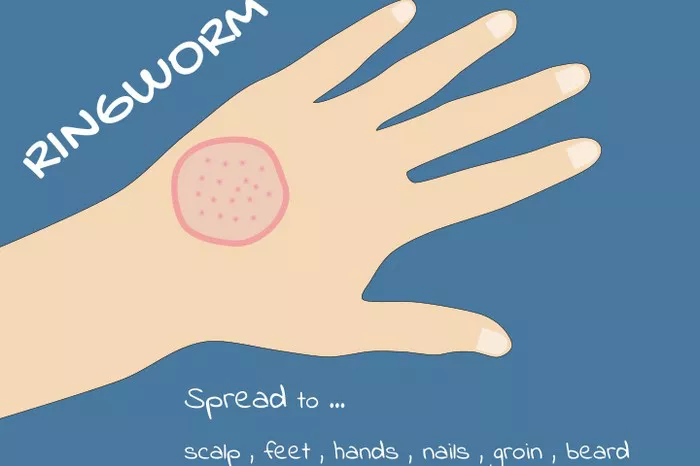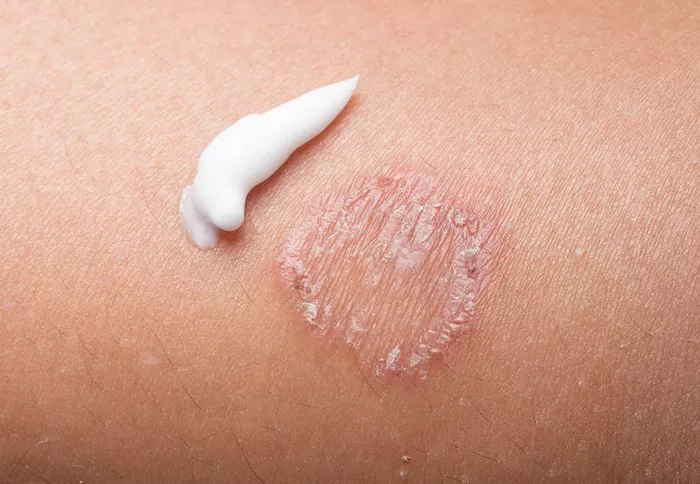Ringworm, despite its misleading name, is not caused by worms but by fungi. This fungal infection, also known as dermatophytosis, can affect the skin, scalp, and nails. One common question that arises about ringworm is whether it can be transmitted through clothes. Understanding how ringworm spreads and its ability to survive on different surfaces, including clothing, is crucial for effective prevention and management of this condition.
What is Ringworm?
To address the question of whether ringworm can be transmitted through clothes, it’s essential to first understand what ringworm is and how it spreads. Ringworm is a contagious fungal infection caused by various dermatophyte fungi. These fungi thrive on the keratin (a protein) found in the outer layer of the skin, hair, and nails. The name “ringworm” comes from the characteristic red, ring-shaped rash that often appears on the skin affected by the infection.
Ringworm can affect different parts of the body, including:
- Skin: Ringworm on the skin (also known as tinea corporis) appears as a red, scaly rash that may be ring-shaped and itchy.
- Scalp: Tinea capitis is ringworm of the scalp and can cause hair loss and scaly patches on the scalp.
- Feet: Athlete’s foot, or tinea pedis, is a type of ringworm that affects the feet, causing itching, burning, and cracking of the skin, especially between the toes.
- Groin: Jock itch, or tinea cruris, affects the groin area and presents as a red, itchy rash.
How Does Ringworm Spread?
Ringworm is highly contagious and can spread through direct or indirect contact with infected individuals or contaminated objects and surfaces. The most common modes of transmission include:
- Direct Contact: Skin-to-skin contact with an infected person or animal can transmit the fungus responsible for ringworm. This can occur through activities such as touching or sharing personal items like towels, combs, or clothing.
- Indirect Contact: Ringworm can also spread indirectly through contact with contaminated surfaces or objects, such as clothing, towels, bedding, or even surfaces in public places like gym mats or swimming pool areas.
- Animal Contact: Pets, particularly cats and dogs, can carry fungal spores that cause ringworm. Contact with infected animals or their belongings (like bedding or grooming tools) can transmit the infection to humans.
Can Ringworm Spread Through Clothes?
The question of whether ringworm can be transmitted through clothes is important, especially for individuals who may have been in contact with infected individuals or contaminated environments. The ability of ringworm to survive and spread through clothing depends on several factors:
1. Fungal Survival: Dermatophyte fungi that cause ringworm can survive on surfaces like clothing, towels, and bedding for varying lengths of time. The fungi can remain viable (able to cause infection) on these surfaces and fabrics for days to weeks under favorable conditions.
2. Moisture and Environment: Fungi thrive in warm, moist environments. Clothes that are contaminated with sweat or used in humid conditions provide an ideal environment for fungal growth and survival.
3. Duration of Contact: Prolonged contact with contaminated clothing increases the risk of transmission. If fungal spores are present on clothing and come into contact with bare skin, they can cause infection.
Preventing Transmission Through Clothing
To prevent the transmission of ringworm through clothing and minimize the risk of infection, consider the following preventive measures:
1. Personal Hygiene: Maintain good personal hygiene practices, including regular handwashing with soap and water, especially after touching potentially contaminated surfaces or items.
2. Avoid Sharing Personal Items: Refrain from sharing clothing, towels, bedding, or personal items with individuals who have ringworm or suspected fungal infections.
3. Wash Clothing and Bedding: Regularly wash clothing, towels, and bedding in hot water and dry them thoroughly to kill any fungal spores present.
4. Use Antifungal Treatments: For individuals diagnosed with ringworm, use antifungal creams, lotions, or shampoos as prescribed by a healthcare professional. Continue treatment as recommended to prevent spread.
5. Clean and Disinfect Surfaces: Regularly clean and disinfect surfaces that come into contact with potentially contaminated items, such as countertops, floors, and shared equipment.
Conclusion
In conclusion, while ringworm is primarily transmitted through direct contact with infected individuals or animals, the fungus responsible for this infection can survive on clothing and other surfaces. This means that ringworm can potentially be transmitted through clothes, especially if the clothes are contaminated and come into contact with bare skin.Preventive measures, including good personal hygiene, avoiding sharing personal items, and maintaining cleanliness in shared spaces, are key to reducing the risk of ringworm transmission. If you suspect that you or someone you know has ringworm, seek medical advice promptly for diagnosis and appropriate treatment. By understanding how ringworm spreads and taking preventive actions, you can effectively manage this fungal infection and minimize its impact on health and well-being.
Related Topics:


























